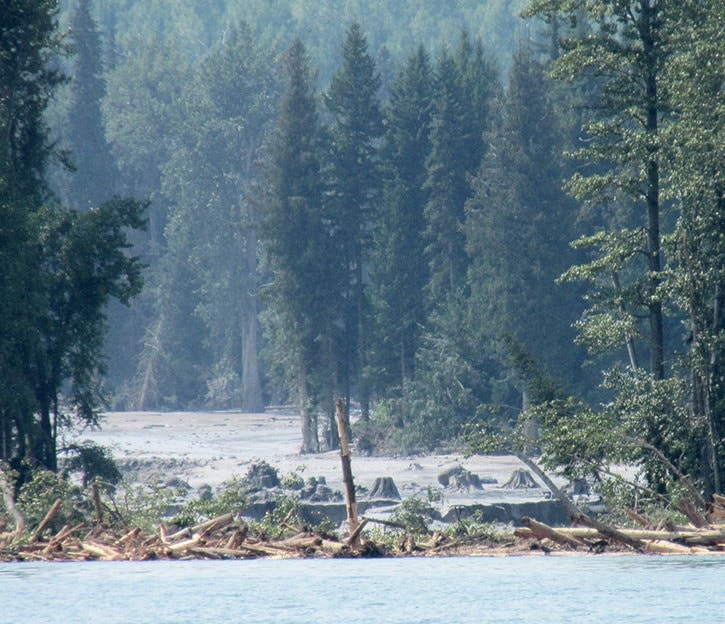The independent engineering panel investigating the Aug. 4 Mount Polley Mine disaster has received 23 written submissions from individual citizens and interest groups.
Ten days after the breach, which resulted in the release of 17 million cubic metres of water and 8 million cubic metres of tailings into Hazeltine Creek, Polley and Quesnel Lakes, the B.C. government, with support of local First Nation bands, ordered an independent engineering investigation into the spill.
In November, the three-member panel put out a call for submissions from the public and interest groups to aid its investigation.
“The panel is quite happy with the response and has been going through the submissions,” the panel’s secretariat Kevin Richter said this week. “The submissions, which came from all around the province, will complement the panel’s work.”
Aside from requesting written submissions, the panel has conducted several investigations.
“They’ve done field investigations, subsurface drilling, mapping, a review of a whole bunch of documentation from when the mine was being planned to its operation, to various reports along the way,” Richter said.
Panel members have examined reports from the mining company, from different firms that have been engaged throughout the mine’s life and different government agencies.
They’ve also ordered laboratory tests, done modelling, looked at mining in other jurisdictions, and conducted interviews and meetings with a variety of people from Mount Polley Mine, Imperial Metals, government and engineering firms.
“There is still some work being undertaken with regards to laboratory testing, but they are coming to a close,” Richter said of the panel’s investigations. “They continue to work to be on track to deliver their findings by the Jan. 31, 2015 deadline to the government and First Nations.”
Mine site settlement ponds go into effect
Two settlement ponds installed in lower Hazeltine Creek went into operation last Friday as part of the restoration work being done by Mount Polley Mine Corporation in the aftermath of the tailings breach.
As water continues to flow from Hazeltine and Edney Creeks into Quesnel Lake it will be stopped in the settlement ponds for a minimum of 24 hours, said Steve Robertson, vice-president of corporate affairs for Imperial Metals.
“When water comes down the creeks it has a chance to de-energize in the settlement ponds and lose the coarser suspended sediment before it flows out into Quesnel Lake,” Robertson said.
The company will continue to monitor the water quality, to take readings on the input and output at the settlement ponds, and measure how much sediment is building up in the bottom of the ponds.
Because of current high turbidity levels, however, the company is providing water to all residents that rely on Quesnel Lake for water, Robertson said.
Dam repairs
The Chief Inspector of Mines has approved an amendment to the Mount Polley Mine Corporation Mines Act permit to allow the company to begin repairs of the breach in its tailings storage facility dam.
“When freshet comes we’re expecting a whole bunch of water and will need a large pond to handle it because we cannot do it through pumping and piping alone,” Robertson said.
Before the breach, the crest of the dam was about 970 metres above sea level. The plan is to build it back up to about 950 metres to fortify its holding capacity.
In the meantime, the company is in discussions with First Nations and government about the possibility of a short-term restart of the mine, however, the company has yet to submit an application to government for that restart, Robertson said.
